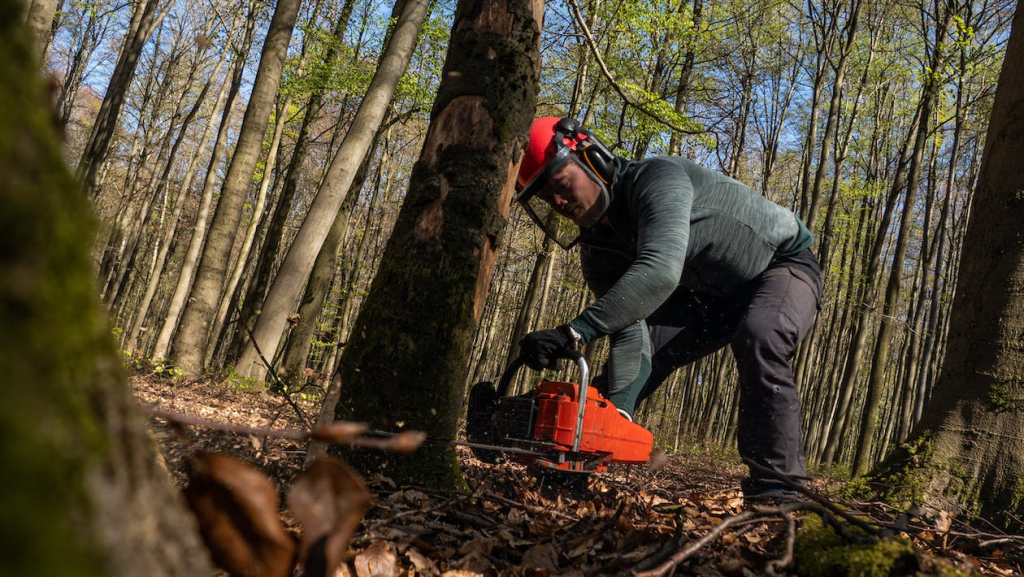The shade, aesthetic value, and oxygen production that trees provide make them an essential component of our natural ecosystem. They help maintain a balanced ecology by providing homes for species. Given these critical functions, cutting down a tree should be a last resort. Sometimes, though, it’s for the best of your property, your safety, and the ecosystem as a whole to have a tree cut down.

This article will discuss the most compelling cases for cutting down a tree, with an emphasis on the value of ethical procedures. We’ll explore some cases where cutting down trees is not only necessary but necessary for the greater benefit. Keeping the right balance between conservation and safety might be difficult when it comes to the trees on your property, but knowledge is power.
What Is The Best Reason To Remove A Tree?
The optimal motivation for cutting down a tree is context and purpose-dependent. Some of the strongest arguments for cutting down a tree include, however:
- Safety Hazards: Trees that are dead, diseased, damaged, or leaning dangerously can pose significant safety risks. They may fall during storms or high winds, potentially causing injury to people or property damage. Removing such hazardous trees is often the top priority.
- Disease and Pest Infestations: Trees suffering from severe diseases or infestations of pests that cannot be effectively treated may need to be removed to prevent the spread of the problem to other trees in the vicinity.
- Overcrowding: In densely wooded areas or landscapes with limited space, trees may compete for sunlight, water, and nutrients. Removing some trees can enhance the health and vitality of the remaining ones.
- Structural Issues: Trees with weak or compromised structural integrity, such as split trunks, root damage, or hollowed cores, may require removal to prevent sudden failures.
- Property Damage: When a tree’s roots are causing damage to structures, such as foundations, sidewalks, or underground utilities, removal may be necessary to prevent further harm and costly repairs.
- Invasive Species: Invasive tree species can outcompete native vegetation, disrupt local ecosystems, and reduce biodiversity. Removing invasive trees can help restore the balance in natural habitats.
- Landscaping and Aesthetics: Sometimes, tree removal is done for landscaping purposes. Removing a tree that obstructs views, casts too much shade, or clashes with the desired aesthetic of a property can be a valid reason, but it should be done thoughtfully and in consultation with an arborist or landscape professional.
- New Construction: When planning new construction or landscaping projects, tree removal might be necessary to make way for buildings, roads, or other structures.
- Tree Health and Longevity: In some cases, removing certain trees can promote the health and longevity of nearby trees. For example, if a large tree is overshadowing smaller, desirable trees, its removal might allow the others to thrive.
- Local Regulations: Compliance with local tree ordinances or regulations might necessitate tree removal. These regulations are often in place to protect the environment, maintain community aesthetics, or manage urban forestry.
Always think about the effects of cutting down trees on the ecosystem and how trees improve our lives before doing so. Before deciding on tree removal, it is important to discuss the pros and cons with a qualified arborist or tree care professional and consider other options, such as pruning or keeping the tree in place.
What To Consider When Removing A Tree?
There are several things to think about while cutting down a tree to make sure the job is done safely, responsibly, and within the law. An extensive set of factors includes the following:
- Tree Health and Condition: Assess the tree’s health, looking for signs of disease, decay, structural issues, or pest infestations. A healthy tree typically doesn’t need removal.
- Tree Species: Some tree species may require specific permits or have regulations governing their removal. Ensure compliance with local laws and ordinances.
- Safety: Prioritize safety for people, property, and the workers involved in the removal. Identify potential hazards like falling branches, electrical lines, or nearby structures.
- Tree Size and Location: The size of the tree and its proximity to structures, roads, power lines, and other trees will affect the complexity of the removal and may require specialized equipment or techniques.
- Permits and Regulations: Check local and municipal regulations regarding tree removal. Permits may be required for certain tree species, sizes, or locations.
- Environmental Impact: Consider the environmental impact of tree removal, especially if the tree provides habitat for wildlife or contributes to local biodiversity.
- Alternative Options: Explore alternatives to removal, such as pruning, crown reduction, or tree preservation techniques, especially for valuable or healthy trees.
- Qualified Professionals: Hire a certified arborist or tree removal specialist with the expertise, experience, and equipment necessary for safe and efficient tree removal.
- Budget: Determine your budget for the removal, as costs can vary depending on factors like tree size, location, and accessibility.
- Timing: Choose an appropriate time for removal. Some trees may need to be removed during a specific season to minimize harm to wildlife or to ensure safe removal conditions.
- Disposal: Plan for the disposal of the tree’s debris and wood. Options include mulching, chipping, or repurposing the wood for lumber or firewood.
- Utility Lines: Be aware of utility lines near the tree. Contact utility companies to safely disconnect or relocate lines if necessary.
- Insurance: Ensure that the tree removal company has proper insurance coverage to protect against any accidents or damage during the removal process.
- Neighbour Consideration: If the tree extends onto a neighbour’s property or could potentially damage their property, consider discussing the removal with them and potentially sharing costs.
- Post-Removal Maintenance: After the tree is removed, consider whether you want to plant a new tree or perform landscaping to restore the area.
- Documentation: Keep records of all permits, contracts, and communications related to tree removal, which can be valuable in case of disputes or liability issues.
- Wildlife and Habitat Protection: Take steps to protect any wildlife that may inhabit the tree or its surroundings, such as nesting birds or beneficial insects.
- Public Safety: If the tree poses a public safety risk, report it to the appropriate authorities and follow their guidance.
The choice to remove a tree is a major one that must be carefully considered in light of safety, legal requirements, and environmental concerns. To ensure the process is done appropriately and ethically, it is essential to consult with a professional arborist or tree service.
Conclusion
The decision to cut down a tree is complex and should never be made in haste. To determine whether or not cutting down a tree is the best option, several factors must be examined. The safety of people and property, adherence to applicable laws, and assessment of the tree’s health and condition should always come first.
Pruning and other forms of tree maintenance are sometimes viable alternatives to removal that can help us keep trees that provide environmental and aesthetic advantages. Budgeting, planning for disposal and restoration after removal, and environmental impact are other important factors.
Responsible tree removal requires the assistance of trained professionals who can evaluate the issue, offer advice, and chop down the tree in a controlled manner. By giving due consideration to all of these considerations and seeking out expert advice when necessary, we can find a happy medium between satisfying our needs and fulfilling our duty to conserve and safeguard our natural environment.
Are you looking for professionals who offer complete Melbourne Tree Care Solutions? You can find it here at harry’s yard. Visit us today!

